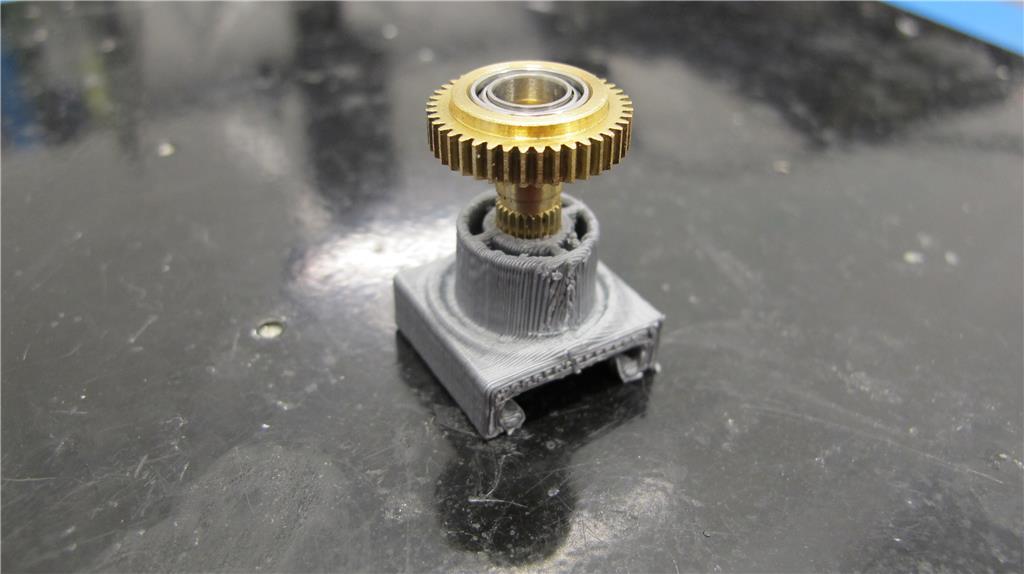Strengthen Servo Splines In 3D Printed Brackets
Step 5 - Wait for cool down then remove the gear from the plastic
Wait a few minutes for the metal gear to cool down, this is important because as long as the metal gear is hot the plastic will be soft. You want the plastic to be solid when you remove the gear. You also don't want to burn your fingers!!! Wear gloves just in case! Once the plastic is back to it's solid state, then remove the gear.
You should now have a 3D printed bracket that will have a more solid interface with a servo! Best of luck!


i also take out the bearing . it heats up al ot faster.
Great information. Thanks!
I have never printed 3D and know virtually nothing about it. I do some day soon want to jump in though. Please consider these "never been there" questions;
What are people printing this part out of? Is there a stronger material that would be preferable it use then the common?
I had some parts printed for me that were printed from carbon fiber. I'm told this material is superior in strength and durability. Can Carbon fiber be used for this part and can all printers print with CF?
Do you need a special printer for different types of print media?
I guess I could Google all this but I feel lazy today. If I don't gat an answer I understand.
If I don't gat an answer I understand.
Hi Dave,
Here's a few answers to your questions:
People are mostly commonly printing with PLA these days. Others are using PETG and ABS.
PETG is a strong material, PLA+ is pretty good too.
I believe most printers can print with plastic with infused carbon fiber but a hardened nozzle is needed due to the amount of wear that happens. Carbon fiber is abrasive and will wear a regular nozzle down quite fast.
Naw, most printers can print almost anything, you may need a custom nozzle for some materials. I guess you can also check the max temp that a printer can do because that may be a limiting factor for some high temp materials.
Hope that helps Dave!
Thanks for taking the time to answer my questions. This all makes a lot of sense and helped me to understand.
You can always tell a printing noob because they always seem to ask about exotic materials right off the bat. I know I did too. Eventually things settle down and most people go with PLA due to low cost and easy of use. ABS is the old standard and actually post processes better than PLA. ABS can be solvent welded while PLA cannot.
I will further comment on Jeremy's #4. Not all printers are great at all materials. If you plan to use ABS you will need an enclosure in order to prevent warping on larger parts. The beauty of PLA is that it prints well at room temp.
I know I did too. Eventually things settle down and most people go with PLA due to low cost and easy of use. ABS is the old standard and actually post processes better than PLA. ABS can be solvent welded while PLA cannot.
I will further comment on Jeremy's #4. Not all printers are great at all materials. If you plan to use ABS you will need an enclosure in order to prevent warping on larger parts. The beauty of PLA is that it prints well at room temp.
For a serioiusly good printer that covers many materials with ease, look at the SynDaver AXI printer. Its hardened steel nozzle temp handles many materials and the heated bed always for parts to be removed with ease. Pricey but good. Ive had it for a few months now and its a joy to use.
Outstanding! Thanks!!